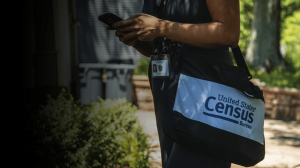Data mining software used by spy agencies just got more powerful

Data mining software used by both US intelligence agencies and large corporations just got an upgrade.
Franklin, Tenn.-based Digital Reasoning — a cognitive computing developer that has contracts with the Departments of Defense and Homeland Security, as well as the U.S. intelligence community and several allied governments — has released a new version of its software, expanding the big data analytics capabilities of several agencies.
The name of the new platform is Synthesys 4. It adds a suite of data aggregation, correlation and organization tools, among other things. The upgraded, “lighter” version will also be easier to install, requires less memory and is more user friendly, the firm claims. Company executives expect Synthesys 4 to be more widely employed by systems integrators, like Booz Allen Hamilton, than previous versions.
Palantir Technologies, perhaps the most recognizable name in big data analytics, is a direct competitor to Digital Reasoning in the federal market.
Vice President of Federal Programs Eric Hansen described his company’s technology as “cognitive computing solutions [that] help computers think like a human’s brain.”
Hansen described that, “while computers are generally good at some tasks — like mathematical functions or finding specific terms quickly — historically they have not been able to see the big picture, with the complete context of the situation, like a human can. Digital Reasoning is helping computers merge concepts and behaviors and paint a more holistic picture to understand the contextual meaning of data.”
Digital Reasoning is a portfolio company of In-Q-Tel, the CIA’s venture capital investment arm.
Broadly, In-Q-Tel invests in innovative software and hardware companies that in-turn typically sell products to intelligence agencies and the U.S. defense sector. The investing group is a significant force in the U.S. intelligence community and as a result, influences the technology procurement process to some extent.
In 2012, then CIA Director David Petraeus spoke briefly about the importance of In-Q-Tel by saying, “our partnership with In-Q-Tel is essential to helping identify and deliver groundbreaking technologies with mission-critical applications to the CIA and to our partner agencies.”
By using machine learning and neuro-linguistic programming, among other technologies, Digital Reasoning supports three general use cases within the federal government: threat intelligence, continuous monitoring and data enrichment.
Continuous monitoring in this context relates to efforts at detecting possible threats posed by employees or contractors who have access to an organization’s network. The software, Hansen said, can predict and proactively respond to an individual’s attempted attack by determining a person’s baseline behavior and then detecting pattern anomalies over time.
Clients of Digital Reasoning also include financial firms like Goldman Sachs and Credit Suisse, who must comply with SEC and FINRA rules that require them to supervise employee communications.
“Digital Reasoning’s technology tells the story by analyzing behavior, human anomalies, decoy language and available structured and unstructured data to think like a master human detective to understand what’s really going on,” Hansen, a retired Army Intelligence Officer, said.
In the scope of threat intelligence mining, Hansen told FedScoop that “Digital Reasoning is focused on helping agencies with national security by looking outside of the U.S. and monitoring and analyzing large volumes of data.”
This means being able to “quickly read, view and analyze human communication and unstructured data, and determine which data is the most critical to national security decisions,” he said.
Founded in 2000 at the University of Tennessee by Tim Estes — who has quickly become a prominent voice advocating for the “moral use” of big data — Digital Reasoning serves a variety of industries beyond defense, intelligence and financial services.
The health care market, for example, is another sector leveraging Digital Reasoning’s products to better understand patient data. Hospital Corporation of America Chief Data Scientist Edmund Jackson said in a statement that HCA plans to use Synthesys 4 because of big data analytics “increasingly important role” in their mission of “best possible patient outcome.”
HCA is in an investor in Digital Reasoning.






